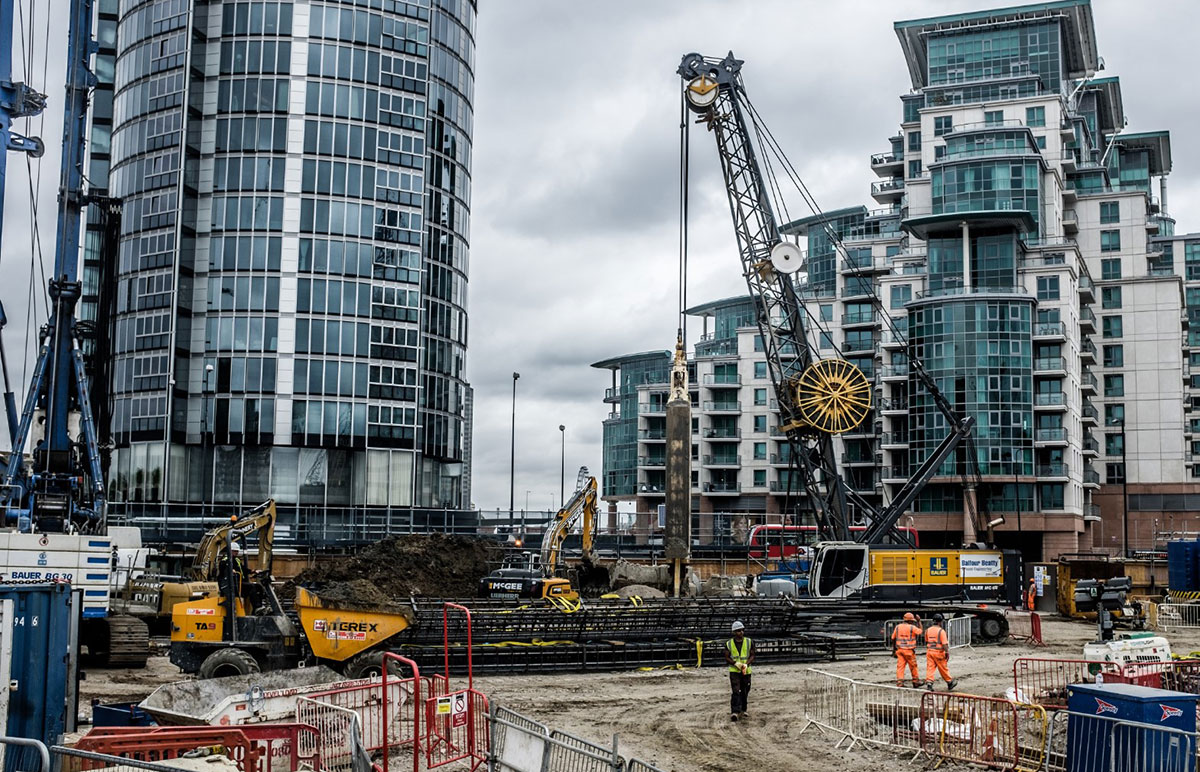The 15-Second Trick For Geotheta
The 15-Second Trick For Geotheta
Blog Article
What Does Geotheta Mean?
Table of ContentsAll about GeothetaHow Geotheta can Save You Time, Stress, and Money.The Greatest Guide To GeothetaExcitement About GeothetaHow Geotheta can Save You Time, Stress, and Money.

They carry out site investigations, collect samples, execute lab tests, and assess data to assess the suitability of the ground for building tasks - Engineer of Record. Based upon their searchings for, geotechnical designers supply referrals for foundation layout, slope stability, preserving frameworks, and mitigation of geotechnical hazards. They team up with various other professionals, such as architects, structural designers, and building and construction teams, to guarantee that geotechnical considerations are integrated right into the general project design and application
By assessing the actions and buildings of dirt and rock, they can recognize prospective geotechnical hazards such as landslides, dirt negotiation, or slope instability. Their proficiency assists avoid failings or accidents that can jeopardize lives and home. Here are some detailed responsibilities and responsibilities of a geotechnical engineer: Website Examination: Geotechnical engineers conduct website investigations to collect information on subsurface conditions.
They translate the information to recognize the residential properties and habits of the soil and rock, including their strength, permeability, compaction attributes, and groundwater problems. Geotechnical Evaluation and Design: Geotechnical designers examine the data collected throughout site investigations to examine the security and viability of the website for building jobs. They execute geotechnical calculations and modeling to review elements such as bearing capacity, negotiation, incline stability, side earth stress, and groundwater circulation.
The smart Trick of Geotheta That Nobody is Talking About
Structure Style: Geotechnical designers play a critical role in developing structures that can safely sustain the designated framework. They analyze the dirt problems and load demands to identify the ideal foundation kind, such as superficial structures (e.g., footings), deep structures (e.g (https://hub.docker.com/u/geotheta)., heaps), or specialized techniques like dirt renovation. They think about factors such as negotiation restrictions, bearing ability, and soil-structure interaction to create optimal structure designs
They evaluate building and construction strategies, screen website tasks, and perform area inspections to validate that the layout recommendations are complied with. If unforeseen geotechnical problems arise, they assess the scenario and offer suggestions for remediation or changes to the design. Threat Evaluation and Mitigation: Geotechnical designers examine geotechnical hazards and dangers related to the task site, such as landslides, liquefaction, or dirt disintegration.

Partnership and Communication: Geotechnical engineers work very closely with various other experts associated with a task, such as designers, structural engineers, and construction teams. Effective communication and partnership are vital to incorporate geotechnical factors to consider into the total task design and building process. Geotechnical designers provide technical proficiency, response queries, and ensure that geotechnical requirements are met.
The Facts About Geotheta Revealed
Right here are some kinds of geotechnical designers: Foundation Designer: Foundation engineers concentrate on designing and analyzing structures for frameworks. They examine the dirt problems, tons requirements, and site features to identify one of the most proper foundation kind and design, such as superficial structures, deep structures, or specialized strategies like heap structures.
They assess the elements influencing incline security, such as dirt homes, groundwater problems, and slope geometry, and develop methods to stop incline failings and minimize dangers. Quake Engineer: Earthquake engineers concentrate on examining and designing frameworks to stand up to seismic pressures. They examine the seismic danger of a website, assess soil liquefaction potential, and develop seismic design requirements to make sure the safety and durability of frameworks throughout earthquakes.
They perform field testing, collect examples, and evaluate the collected data to identify the dirt residential properties, geologic formations, and groundwater conditions at a site. Geotechnical Instrumentation Designer: Geotechnical instrumentation designers concentrate on surveillance and measuring the actions of soil, rock, and frameworks. They install and maintain instrumentation systems that keep an eye on variables such as dirt settlement, groundwater levels, incline motions, and structural variations to examine performance and provide very early cautions of potential concerns.
The 2-Minute Rule for Geotheta
They conduct tests such as triaxial examinations, debt consolidation examinations, straight shear tests, and leaks in the structure examinations to gather information for geotechnical evaluation and style. Geosynthetics Designer: Geosynthetics engineers focus on the design and application of geosynthetic products, such as geotextiles, geogrids, and geomembranes. They make use of these materials to boost dirt stability, strengthen inclines, give drainage solutions, and control erosion.
They have a tendency to be investigative people, which suggests they're intellectual, reflective, and investigative. They are interested, systematic, sensible, logical, and rational. Several of them are likewise social, indicating they're kind, generous, participating, client, caring, practical, empathetic, sensible, and pleasant. Does this audio like you? Take our complimentary profession examination to learn if geotechnical designer is one of your leading job suits.
In the office atmosphere, geotechnical designers use specialized software program tools to do estimations, create styles, and examine information. They prepare records, testimonial task requirements, interact with clients and group participants, and coordinate job activities. The workplace setup provides a conducive setting for research, analysis, and collaboration with other specialists involved in the job.
Our Geotheta PDFs
They frequently check out task sites to perform site examinations, assess geotechnical problems, and collect information for analysis. These sees involve traveling to various locations, sometimes in remote or challenging terrains. Geotechnical designers might carry out soil sampling, conduct tests, and monitor building and construction activities to make sure that the geotechnical aspects of the job are being carried out correctly.
Geotechnical designers likewise function see here now in specialized geotechnical research laboratories. In these centers, they perform experiments, perform examinations on soil and rock samples, and evaluate the design residential properties of the materials. Geotechnical research laboratory designers function extensively in these atmospheres, taking care of screening equipment, running instruments, and taping data. They team up with various other lab team to make certain precise and reputable screening outcomes.
Report this page